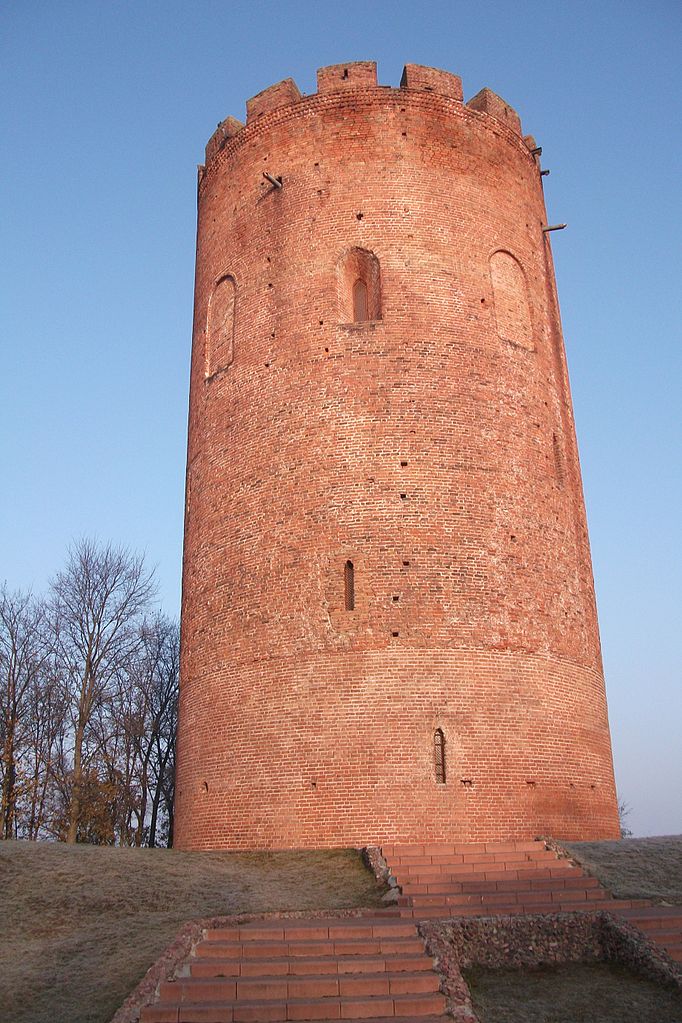Tower of Kamianiec
Kamianiec Tower is a unique monument of medieval architecture and defensive architecture, located in the Belarusian town of Kamianiec, 37 km north of Brest. The tower is 31 meters high and is a fortified donjon of the Volyn type. According to the Galicia-Volhynia Chronicle it was built from 1276 to 1288.
.Stone towers or vezhi were built as outposts of feudal castles. They made it possible to withstand a long siege. In addition to rooms for the garrison, such fortifications had stores of provisions and ammunition.







Video: Kamenets Tower
ContentsHighlights
The Kamenets Tower stood on a high river bank and was virtually impregnable to enemies. Its defensive capabilities were greatly enhanced by its design. The upper platform was covered with 14 rectangular teeth, behind which archers hid. From here it was possible to fire roundly at the enemies during a siege. The tower had narrow loopholes for firing guns, so the enemy could not get close to the stone walls.
.
The tower resembles a chess rook. It is built on a stone foundation and consists of five tiers. The outer diameter of the Kamenets Tower is 13.6 meters. The thickness of the powerful walls reaches 2.5 meters. At the top they become a little thinner and have a slight inclination to the vertical axis. The rounded structure is built in a laconic Romanesque style and has elements of early Gothic.
.The building material for the tower was bricks of dark red and yellowish colors, laid in the so-called “Balta” masonry. The technology of their manufacture is unknown. It is believed that egg white was added to the binding mortar, so the bricks have stood the test of time and for more than seven centuries have not lost their strength.
.
Now the Kamenets Tower has been turned into a museum. Nearby it holds theatrical festivals and historical reconstructions, which always gather a lot of spectators.
.
History
In the Middle Ages, the surrounding lands were called Berestey lands and they were owned by the Galicia-Volhynia princes. There were constant wars here, in which Poles, Russians and Lithuanians took part.
>Prince Vladimir Vasilkovich decided to strengthen the borders of the territories that belonged to him and erected several guard donjons along them. Mentions of the appearance of the city of Kamenets are found on the pages of the ancient Ipatiev Chronicle. It is known that the construction works were led by a Volyn architect, or as they used to say at that time, “gradorub” Alexa. He had great experience in his work and during the reign of Vladimir Vasilkovich built for the prince several cities and fortresses.
.
Up to our days from the old Volyn fortifications that existed in Grodno, Brest, Polotsk and other cities, only one Kamenetskaya tower has survived. In XIV-XVII centuries it withstood the sieges of crusaders, Poles and Lithuanians. In the XIX century the old donjon was abandoned. It was even tried to be dismantled for bricks, however, people were unable to cope with the strong masonry.
.In 1903, restoration work was carried out around the architectural monument, during which the remains of the wooden fortress disappeared. After 50 years, the tower was covered with whitewash and its floor was made of stone. After that the tower became known as the White Tower, and this combination turned into a real brand. Now food and alcoholic beverages are called “Belaya Vezha” in Belarus. One of the sanatoriums and casinos bears this name.
.In 1960 Belaya Vezha was declared an architectural monument. Restoration of the unique structure was carried out several more times – from 1968 to 1973 and from 1996 to 2003. During the last restoration, the brick walls were cleaned of whitewash, returning them to their original appearance.
.Museum
Today, the Kamenets Tower museum exposition is open inside the monument. Part of the collection presented here consists of the findings of archaeologists who worked near the tower in 1970.
Tourists begin to familiarize themselves with the fortifications from the basement, where there used to be warehouses for provisions. From here to the river there was a secret passage through which food and water were delivered to the tower during the siege. In the second half of the 19th century the passage was laid.
On the first floor you can see a triptych with materials about the history of the tower’s construction. The second and third tier familiarizes sightseers with the history of Kamyanets. Models of the medieval town and the Kamenets Tower itself are very popular with tourists. The fourth tier is devoted to the history of Belarusian defense architecture, and the fifth tier presents the military history of the region. There is an observation deck on the roof.
.The doors of the museum are open to visitors on all days except Monday and Tuesday. The museum is open from March through October from 10 a.m. to 6 p.m. and from November through February from 10 a.m. to 5 p.m.
.How to get there
Kamenets Tower stands on the high left bank of the Lesnaya River, in the north of Kamenets. South of it runs the republican highway R-102, which connects the Belarusian towns of Vysokoye, Kamenets and Kobrin. There are shuttle buses to Kamenets from Minsk and Brest.
.